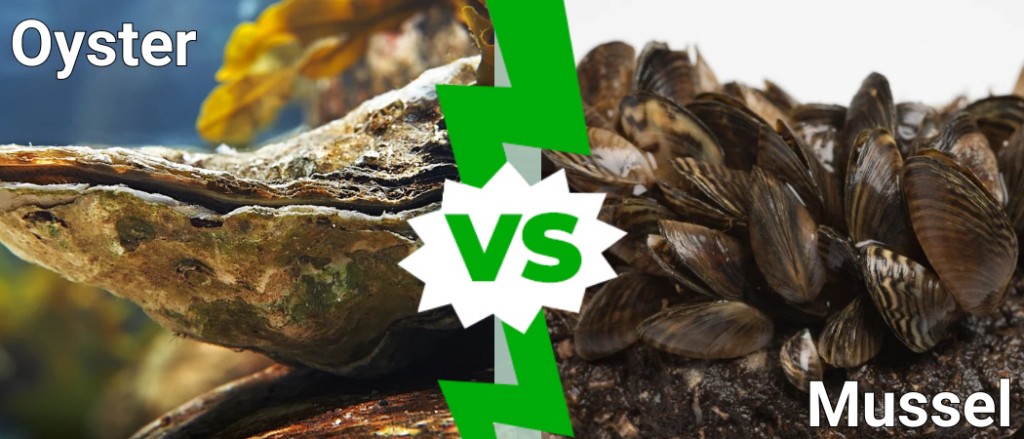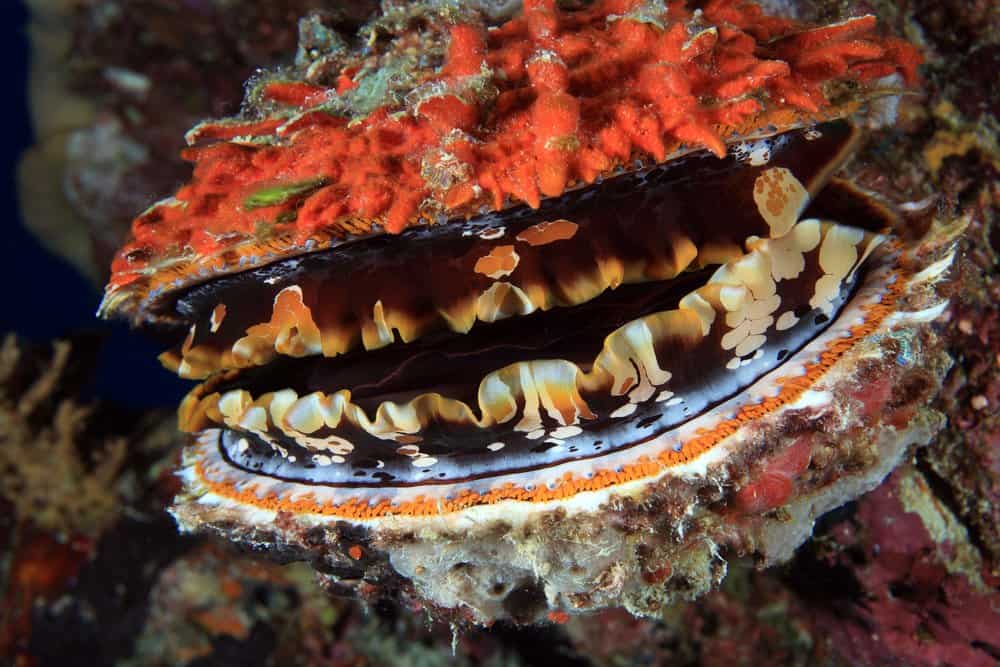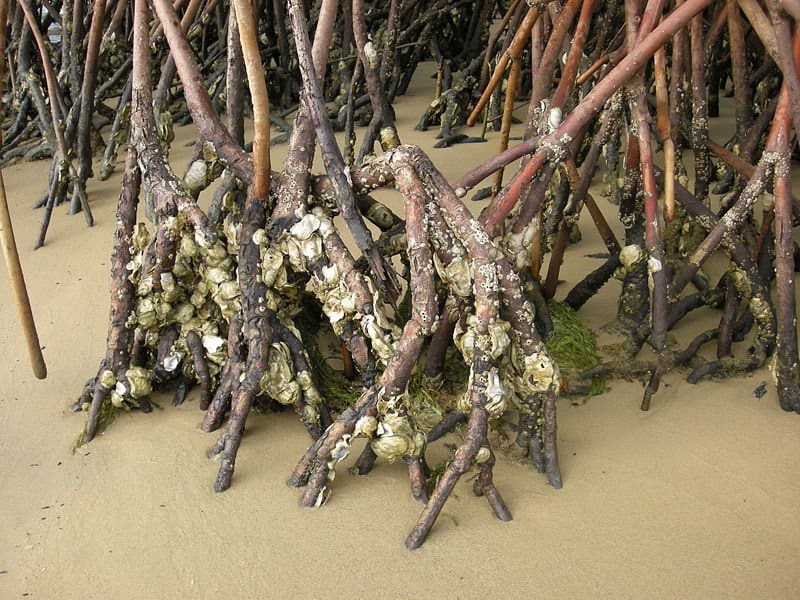Oysters and mussels are two of the most well-known of these mollusks, and they might seem similar on your plate or in the water. That’s why it’s a good idea to weigh the differences between an oyster vs mussel.The oceans, rivers, lakes, and streams throughout the world are packed with interesting creatures. Among these unique beings are the bivalve mollusks, filter feeders that play an integral role in maintaining the ecological balance in the waters. We’ll tell you seven ways that oysters and mussels are unique from one another!
Comparing an Oyster and a Mussel

| Oyster | Mussel | |
| Size | Length: 2in-2.5in, up to 12 inches Weight: 2-3oz | Length: 1.5in-2in, up to 6in Weight: 1.8 to 2.1oz |
| Shape | -Oval-shaped shells that can be irregular | – Wedge-shaped – Longer than they are wide |
| Shell Texture | Thick, rough, calcified | Thin, smooth shells |
| Shell Color | Pearl, white, gray, brown, beige, and even some purplish colors | Dark purple, black, or brown colors |
| Water Habitat | Brackish, salty water | Freshwater and saltwater |
| Pearl Production | Common in several species | Rare |
| Movement | Can move using a “foot” when they’re young, but attach themselves to a substrate as adults | Retain the ability to move into adulthood, but they rarely move on purpose |
The Key Differences Between an Oyster vs Mussel

Mussels are smaller than oysters and have a more uniform shell
©RLS Photo/Shutterstock.com
The greatest differences between an oyster vs mussel are their size, shape, shell textures, and habitats. Oysters are larger than mussels on average, often weighing a full ounce more than them and growing half an inch longer.
Oysters’ shells are oval-shaped and have a propensity to vary due to the presence of barnacles. However, mussel shells are typically wedge-shaped and longer than they are wide. In terms of shell textures, oysters have very thick, rough, calcified shells. Mussels have thin, mostly smooth shells, especially if they live in freshwater.
Oysters live only in brackish saltwater, but mussels can live in freshwater and saltwater. While these are the most important differences between mussels vs oysters, we’re going to explore them in greater depth alongside other qualities.
Oyster vs Mussel: Size
Oysters are larger than mussels. An oyster will measure anywhere from 2 inches to 2.5 inches, and it will weigh anywhere between 2 ounces and 3 ounces. Yet, a mussel can grow between 1.5 inches and 2 inches and weigh up to 2.1 ounces.
Of course, larger species of both creatures exist, with some oysters capable of reaching a length of over 12 inches and some mussels growing up to 6 inches! On the whole, oysters are larger than mussels in the vast majority of cases.
Oyster vs Mussel: Shape
Oysters are oval-shaped, but they can have a lot of irregularity owing to their living conditions. Mussels are more uniform in their shape, typically a wedge shape that is longer than it is wide. The shape of these bivalves’ shells is not the only distinctive element of them, though.
Oyster vs Mussel: Shell Texture

Oysters have rough, highly textured shells, while mussels have thin, mostly smooth shells
©aquapix/Shutterstock.com
Mussels are known for having a very thin, smooth shell. At least, their shells are almost entirely smooth when they live in freshwater so they can slide along the sandy bottoms of those waters. However, oysters have very thick, heavily calcified, and rough shells. It’s not unusual to see oyster shells that have obvious barnacles and bumps.
The textures of oysters and mussels are a great way to tell them apart, especially when it’s used in conjunction with their shapes.
Oyster vs Mussel: Shell Color
Mussel shells have distinct colors. They are uniformly colored with dark purple, black, and brown being the most common colors, but that’s not the case with oysters. Oyster shells mix several colors, and they are rarely evenly distributed. Oysters can be a mix of pear, white, gray, brown, beige, and even purplish hues.
The differences in shell colors, textures, and shapes represent distinct qualities between oysters and mussels. From the perspective of looking for physical differences, these elements represent definitive ways to tell oysters and mussels apart.
Oyster vs Mussel: Water Habitat

Mussels are found in freshwater and saltwater, but oysters are only found in saltwater.
©Ji-Elle – Public Domain
Mussels and oysters do not occupy all the same habitats in the waters around the world. Specifically, mussels are found in freshwater and saltwater, but oysters are only found in saltwater. You can find mussels in various rivers, oceans, and other sources of moving water.
Oysters can live in brackish ocean inlets as well as the oceans around the world. Mussels and oysters may have some overlapping habitats around the world, but you won’t find them in freshwater areas because they cannot survive in them for long.
Oyster vs Mussel: Pearl Production
Oysters are known and celebrated for their ability to produce pears. Several species of oysters can create pearls. Mussels also generate pearls, but it’s not as common as it is in oysters. Interestingly, cultured freshwater pearls made by mussels are frequently generated and sold in jewelry these days.
Oyster vs Mussel: Movement

Mussels can generate pearls, but it’s not as common as it is in oysters.
©iStock.com/VitalisG
Although it’s commonly believed that oysters and mussels merely go where the water takes them, and there’s some truth to that, the reality is that oysters and mussels can move. Each of these bivalves has a foot!
The oyster uses its foot in its youth to find an appropriate substrate upon which to mount itself. After that, it will not move afterward. Mussels retain the use of their foot into adulthood, but they are not very likely to use their foot. Most mussels will only move a few hundred feet throughout their entire adult lives.
Both the oyster and mussel are beholden to the state of the waters in which they live. If the habitat changes to adverse conditions, there is little they can do to increase their chances of survival.
Oysters and mussels are somewhat similar aquatic animals, and they are interesting to study. The next time you are near a large body of water and find one of these shelled creatures, you’ll be prepared to tell them apart from one another. Looking at shape, color, texture, and the water habitat, you can easily tell the differences between mussels vs oysters.
The photo featured at the top of this post is © Pix Box/Shutterstock.com
Thank you for reading! Have some feedback for us? Contact the AZ Animals editorial team.






